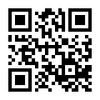文章基本信息
- 标题:An Indoor Study to Evaluate A Mixed-Reality Interface For Unmanned Aerial Vehicle Operations in Near Earth Environments
- 本地全文:下载
- 作者:James T. Hing ; Justin Menda ; Kutulus Izzetoglu 等
- 期刊名称:International Journal of Intelligent Control and Systems
- 印刷版ISSN:0218-7965
- 出版年度:2011
- 卷号:16
- 期号:2
- 页码:132-141
- 出版社:Westing Publishing Co., Fremont
- 摘要:
As the appeal and proliferation of UAVs increase, they are beginning to encounter environments and scenarios for which they were not initially designed. As such, changes to the way UAVs are operated, specifically the operator interface, are being developed to address the newly emerging challenges. Efforts to increase pilot situational awareness led to the development of a mixed reality chase view piloting interface. Chase view is similar to a view of being towed behind the aircraft. It combines real world onboard camera images with a virtual representation of the vehicle and the surrounding operating environment. A series of UAV piloting experiments were performed using a flight simulation package, UAV sensor suite, and an indoor, six degree of freedom, robotic gantry. Subjects’ behavioral performance while using an onboard camera view and a mixed reality chase view interface during missions was analyzed. Subjects’ cognitive workload during missions was also assessed using subjective measures such as NASA task load index and nonsubjective brain activity measurements using a functional Infrared Spectroscopy (fNIR) system. Behavioral analysis showed that the chase view interface improved pilot performance in near Earth flights and increased their situational awareness. fNIR analysis showed that a subjects cognitive workload was significantly less while using the chase view interface.

